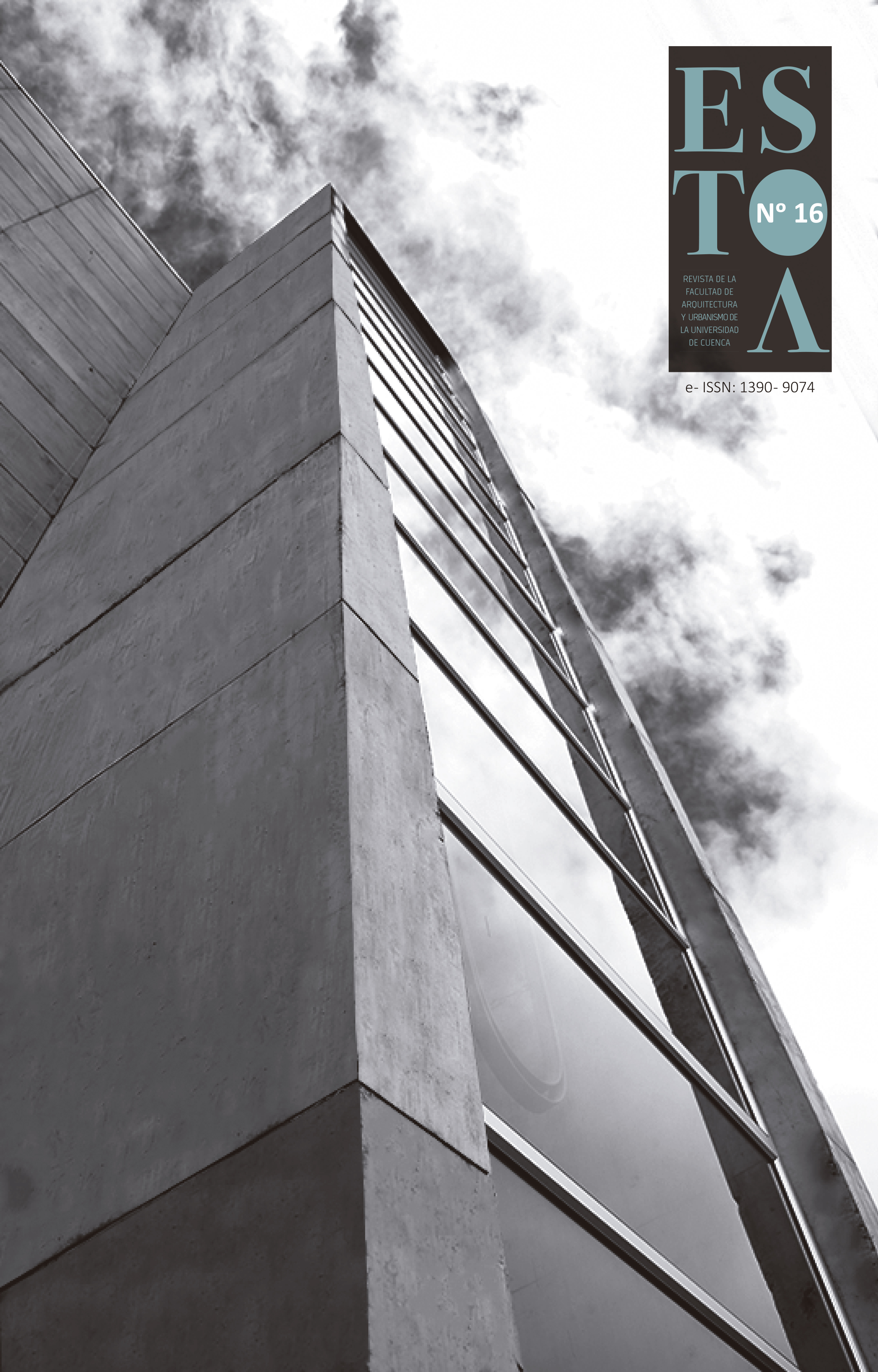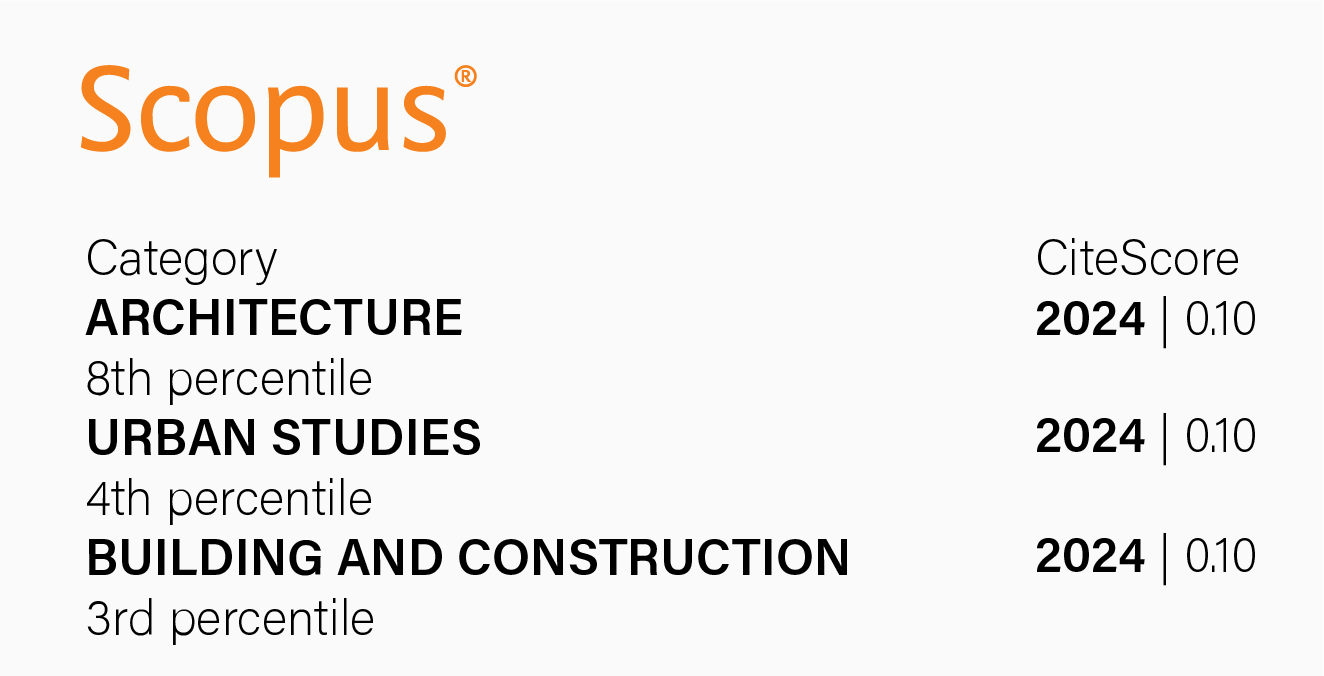Three cities in the science fiction cinema:
Dystopias and the consolidation of a flexible accumulation regime
DOI:
https://doi.org/10.18537/est.v008.n016.a06Keywords:
Flexible accumulation, cinema and city, dystopia, postfordismAbstract
Three turn of century mainstream films which represent the inmediate future city are revised (The Truman Show, Code 46 and The Island). They share to be describable using the concept of dystopia (bad place). The purpose is to identify relations with the con-temporary processes of urbanization and production, as they are described in recent criticism and urban sociology. The emergence and consolidation of a flexible accumulation regime is recognized in the works. The analytical and relational description of the films is made around the strategies of control over the social, production, subject and urban space of dystopian societies. Is verified that there, very relevant part of the dysto-pia’s own conditions coincides empirically with the processes and consequences of a hy-pothetical hegemony of advanced capitalism within the productive and cultural frame-work.
Downloads
References
Bay, M. (dir.) (2005): The Island. Estados Unidos: Dreamworks Pictures y Parkes/MacDonald Productions.
Weir, P. (dir.) (1998): The Truman Show. Estados Unidos: Paramount Pictures y Scott Rudin Productions.
Winnterbottom, M. (dir.) (2003): Code 46. Reino Unido: British Broadcasting Company y Revolution Films.
2. Filmografía referida
Acott, R. (dir.) (1982): Blade Runner. Estados Unidos: The Ladd Company y Warner Bros.
Chaplin, C. (dir.) (1936): Modern Times. Estados Unidos: Charles Chaplin Productions.
Lang, F. (dir.) (1927): Metropolis. Alemania: Universum Films.
Lucas, G. (dir.) (1971): THX 1138. Estados Unidos: American Zoetrope
Niccol, A. (dir.) (1997): Gattaca. Estados Unidos: Columbia Pictures
Villeneuve, D. (dir.) (2017): Blade Runner 2049. Estados Unidos: Columbia Pictures y Scott Free Productions
3. Referencias bibliográficas
Amendola, G. (1997). La ciudad posmoderna: magia y miedo de la metrópoli contemporánea. Madrid, España: Celeste (2000).
Barattini, M. (2009). El trabajo precario en la era de la globalización. ¿Es posible la organización? Polis. revista de la Universidad Bolivariana, 8(24), 17-37.
Barrios, G. (1997). Ciudades de película. Caracas, Venezuela: Eventus.
Benfield, K. (2013). Urbanism: Reconsidering Seaside, Florida. Smart Cities Dive. Washington DC, Estados Unidos: Industrydive Recuperado de https://goo.gl/yE5Rmz
Deleuze, G. (1991). Postdata sobre las sociedades de control. En C. Ferrer (Ed.), El lenguaje literario. Montevideo, Uruguay: Nordan.
Dematteis, G. (1996). Suburbanización y periurbanización. Ciudades anglosajonas y ciudades latinas. En F. Monclús (Ed.), La ciudad dispersa: suburbanización y nuevas periferias. Barcelona, España: CCCB.
Fitzmaurice, T., y Shiel, M. E. (2001). Cinema and the city; film and urban society in al global context. Malden, Estados Unidos: Wiley-Blackwell. - Friedman, T. (2006). The world is flat. A brief history of the twenty first century. Nueva York, Estados Unidos: Farrar, Straus and Giroux.
Gandelsonas, M. (1999). X-Urbanism: architecture and the American City. Nueva York, Estados Unidos: Priceton Architectural Press.
Gentile, A. (2003). En las tramas del McJob. Descualificación laboral y riesgos de vulnerabilidad social para los trabajadores de “fast food”. Documentos de trabajo. CSIC. Unidad de Políticas Comparadas (13).
Goldberger, P. (2011). Apple´s new headquarter. The New Yorker: News Desk. Recuperado de https://goo.gl/ SpLMfc
Hammet, C. (1994). Social polarisation in global ciries: theory and evidence. Urban Studies, 31(3), 401-424.
Harvey, D. (1990a). Flexible accumulation through urbanization. reflections on “post-modernism” in the american city. Perspecta, 26, 251-272.
Harvey, D. (1990b). La condición de la posmodernidad. Buenos Aires, Argentina: Amorrotu.
Harvey, D. (1999). The urban experience. Nueva York, Estados Unidos: John Hopkins University Press.
Harvey, D. (2016). Estados Unidos a partir de Donald Trump, según David Harvey. Entrevista al geógrafo británico [Entrevista en vídeo disponible en línea. Recuperado de https://goo.gl/3fwGuU]. Barcelona, España: CCCB.
Keats, J. (2016). You belong to the Universe. Buckminster Fuller and the future. Nueva York, Estados Unidos: Oxford University Press.
Lange, A. (2017). The one that got away. Curbed. Recuperado de https://bit.ly/2GawZzd
Negri, A., y Lazzarato, M. (2001). Trabajo Inmaterial: formas de vida y producción de subjetividad. Río de Janeiro, Brasil: DP&A.
Olmo, C. del, y Rendueles, C. (2007) Entrevista a David Harvey. Las grietas de la ciudad capitalista. Cuadernos del Cendes, 24 (65), 131-138.
Pérez Barreiro, S. (2016). Utopías. Arquitecturas de ciencia ficción. Madrid, España: CVG.
Ramírez, J. A. (1981). Cinco lecciones sobre arquitectura y utopía. Málaga, España: Departamento de Historia del Arte de la Universidad de Málaga.
Rincón Borrego, I. (2013). El Show de Truman. De la utopía arquitectónica a la realidad simulada. Trabajo presentada en la conferencia On Cinema, Escola Superior Artística do Porto, Portugal.
Rodríguez Fernández, G. (2005). La ciudad como sede de la imaginación distópica: literatura, espacio y control. Scripta Nova. Revista Electrónica de Geografía y Ciencias Sociales, IX(181).
Rogers, A. (2017). If you care about cities, Apple’s new campus sucks. Wired. Recuperado de https://goo.gl/ d9bfhL
Sassen, S. (2001). The global city: New York, London, Tokyo. Princeton, Estados Unidos: Princeton Architectural Press.
Secchi, B. (1999). Lo urbano en 20 autores contemporáneo. En Á. Martín Ramos (Ed.), Lo urbano en 20 autores contemporáneo. Barcelona, España: Edicions UPC.
Sutcliffe, A. (1993). La ciudad en el cine. Historia urbana: revista de historia de las ideas y de las transformaciones urbanas(2), 7-24.
Vainer, C. (2000). Pàtria, empresa e mercadoria: notas sobre a estratégia discursiva do Planejamento Estratégico Urbano. En O. Arantes, C. Vainer, y E. Maricato (Eds.), A cidade do pensamento único: desmanchando consensos. Petrópolis, Brasil: Vozes.
Vielma, J. I. (2010). Altopía, otros lugares: crítica interdisciplinaria a los lugares indeteminados de la ciudad contemporánea. Caracas, Venezuela: CEC - FAUUCV.
Virilio, P. (1984). The overexposed city. Zone(1-2).
Published
How to Cite
Issue
Section
License
The Journal declines any responsibility for possible conflicts derived from the authorship of the works that are published in it.
The University of Cuenca in Ecuador conserves the patrimonial rights (copyright) of the published works and will favor the reuse of the same ones, these can be: copy, use, diffuse, transmit and expose publicly.
Unless otherwise indicated, all contents of the electronic edition are distributed under a Creative Commons Attribution-NonCommercial-ShareAlike 4.0 International License.




